By tothetick
If you had the chance right now to see what was going to happen in the ten years or so (and no, I’m not talking about looking into your crystal ball or invoking the spirits from the other side), then what would you do? You couldn’t really miss the opportunity and failing to see that it’s water that you should be investing in would be senseless. It’s not just staring you in the face, it’s damn well punching you on the nose.
According to analysts, the world will end up facing a crisis over water shortages, and it has already begun in many parts of the world; and not just in those that are in Africa. Sometimes those places are much closer to home than either we might expect or that we would like for our comfort-zone. By 2030, we will have a 40% shortfall between the water that is available and what is being demanded.
There are many countries in the world that have a higher rate of extraction of water than its replenishment, and that means that water is being used up at unbelievable rates today.
- The total volume of water on the planet is fixed, estimated at about 1.386 billion km³.
- But, 97.5% of that is saline water.
- Only 2.5% is fresh, with the vast majority in either unreachable places or trapped in ice reserves somewhere around the world.
- Only about 0.3% is on the surface of the planet and directly available to us.
Food prices were volatile in 2008, 2009 and 2010 and it is obviously water that will lie at the heart of the problem in the future. Water will be the agricultural challenge in the years ahead. Water supplies, which are already scarce, are being depleted by growing industries and countries that are demanding that water in their manufacturing processes.
Water Scarcity in the World
The World Economic Forum states that “we are now on the verge of water bankruptcy in many places around the world, with no clear way of repaying the debt”. Water bubbles have existed around the world, because we have had water prices maintained at very low prices in order to meet the needs of growing industrialists. The knock-on effect in certain regions around the world that are seeing their water bubbles burst (China, the Gulf States, India, the Middle East) will be (further) political instability and economic upheaval. At the present time, water has no substitute. It’s not like energy where we could (if we were actually to invest) find an alternative through renewable sources. Water cannot be replaced. We could perhaps invest in developing genetically-modified organisms that require less water to grow. But, even then we are going to hit the problem of the effects of that technological development in the food industry on our bodies. Anyhow, we are currently nowhere near that fork in the road yet. We are simply not investing in that.
Water: Scarce!
Today the figures show the following:
- Agriculture represents about 71% of water usage today (3, 100 billion km³).
- This will increase to 4, 500 billion km³ in the next fifteen years.
- Industry represents about 16% of water usage today in the world.
- This will increase to 22% in the next decade and a half.
- China’s water usage for industry will stand at 40% of the increase in demand for water around the world over that same period.
As the population around the world grows our water consumption grows too. But, it does not grow at the same proportional rate as the size of the population. The global population grew between 1990 and 2000, for instance by a factor of four. Water consumption grew by a factor of nine over that same period. Seems very much as if the more we grow, the thirstier we become. The richer we become, the more we waste that particular resource.
The world is a vulnerable place subjected to diminishing resources coupled with a population that is growing by the day. Births average out at about 134 million per year and deaths stand at 56 million today. That means that there is a net growth in world population of approximately 78 million people and world population is estimated to grow to between 8.3 and 10.9 billion by 2050. World population is currently at over 7.163 billion people today. As our world grows in population size, it will thirst even more for water. Yet water is sometimes considered only as a commodity to be bought and sold economically. It’s much more than that. It has a religious dimension, a social and cultural side too, as well as a biological need. That means that it will always be required. Water scarcity is just like the financial crisis that was pooh-poohed as being nothing or impossible, the bubble that would never and could never burst. But, that did burst with a big slap in the face at the same time. We shouldn’t look at water scarcity and the bankruptcy of certain countries in terms of water supply with disdain and dismiss the problem belittling it. It will spread like the financial crisis unless we take things in hand.
But taking things in hand is the job of governments and non-governmental organizations that are protecting the environment and making people aware that they are either wasting or over-consuming. One thing is certain: water is scarce on the planet and it will become scarcer. The second thing that is certain is that water will continue to grow economically-speaking as a commodity to invest in.
Investing in water seems as if it might be a good bet for the future. Water is not affected by business cycles like other commodities (yet). Water is still in demand whether inflation is high or low, whether there is a recession or not and that’s the social, religious and biological aspect that it has.
The S&P 1500 Water Utilities Index charts show exactly that.
S&P 1500 Global Water - Year 2013
S&P 1500 Global Water - 5 Years
American States Water shows an increase today of 0.20% (up 0.1100 to $54.6100). Over the past twelve months there has been a 37.39% increase in the value of their stock. American States Water purchases and produces water and then distributes it and sells it on. It’s one of the biggest names in the water sector and is included in the S&P 1500 Water Utilities Index.
American States Water 1 year
Similarly, Aqua America is up today 2.45% (0.7600 to $31.8100), with an increase of 25.78% in share value over the past year alone. Over the past year share value has ranged from $24.0600 to $33.2800. Aqua America Inc. is a water utility company (supplying residential, commercial and industrial sectors.
Aqua America 1 Year
Alternatively, the PowerShare ETF PHO (incepted on December 6th 2005), which invests 80% of its total assets in common stocks of water-industry companies, would also be a good bet. Today PowerShares Water Resources Portfolio stands at $22.5100, up $0.1000 (+0.45%). Shares have ranged from $17.7200 to $32.5790 over the past year.
werShares Water Resources Portfolio PHO 1 year
Whatever happens in the future, you can be sure that anything to do with water will become bigger and better business. We haven’t invented anything that will replace it for the moment. We will always be in need of water and the population of the world is growing by the second. By investing in this sector it’s certain to bring in dividends and at the same time give the financial means to carry out research in the sector into ways of increasing the water supply that we have

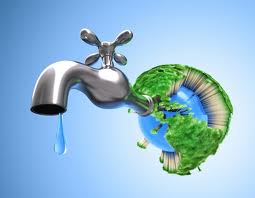
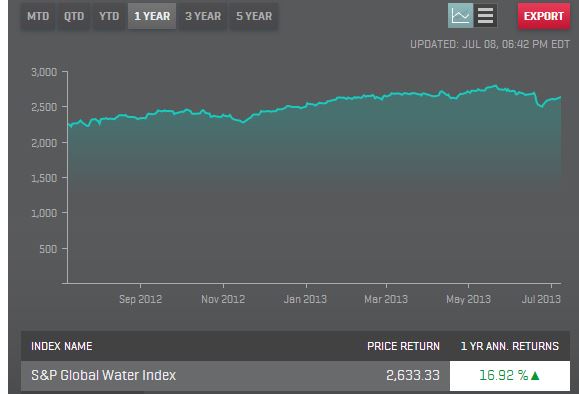
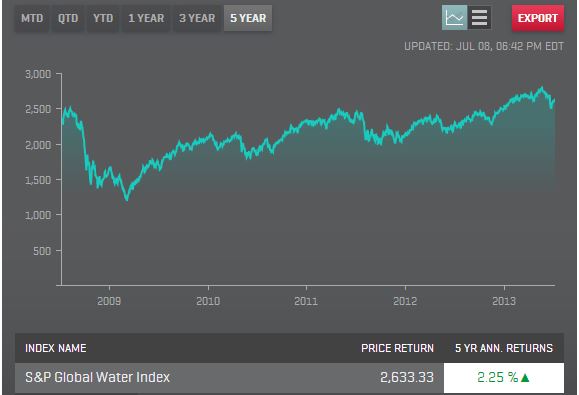
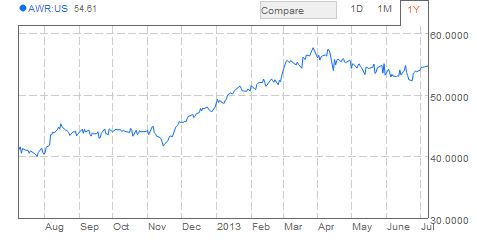
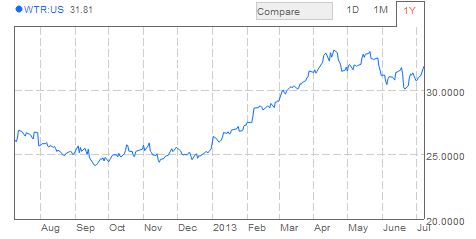
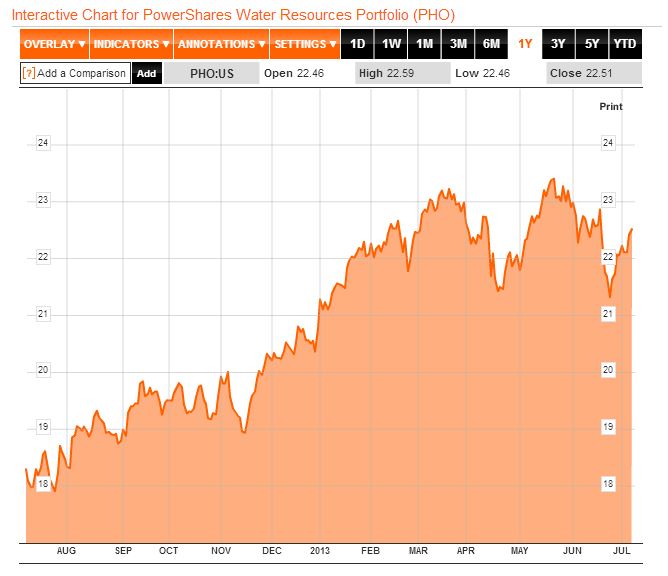
No comments:
Post a Comment